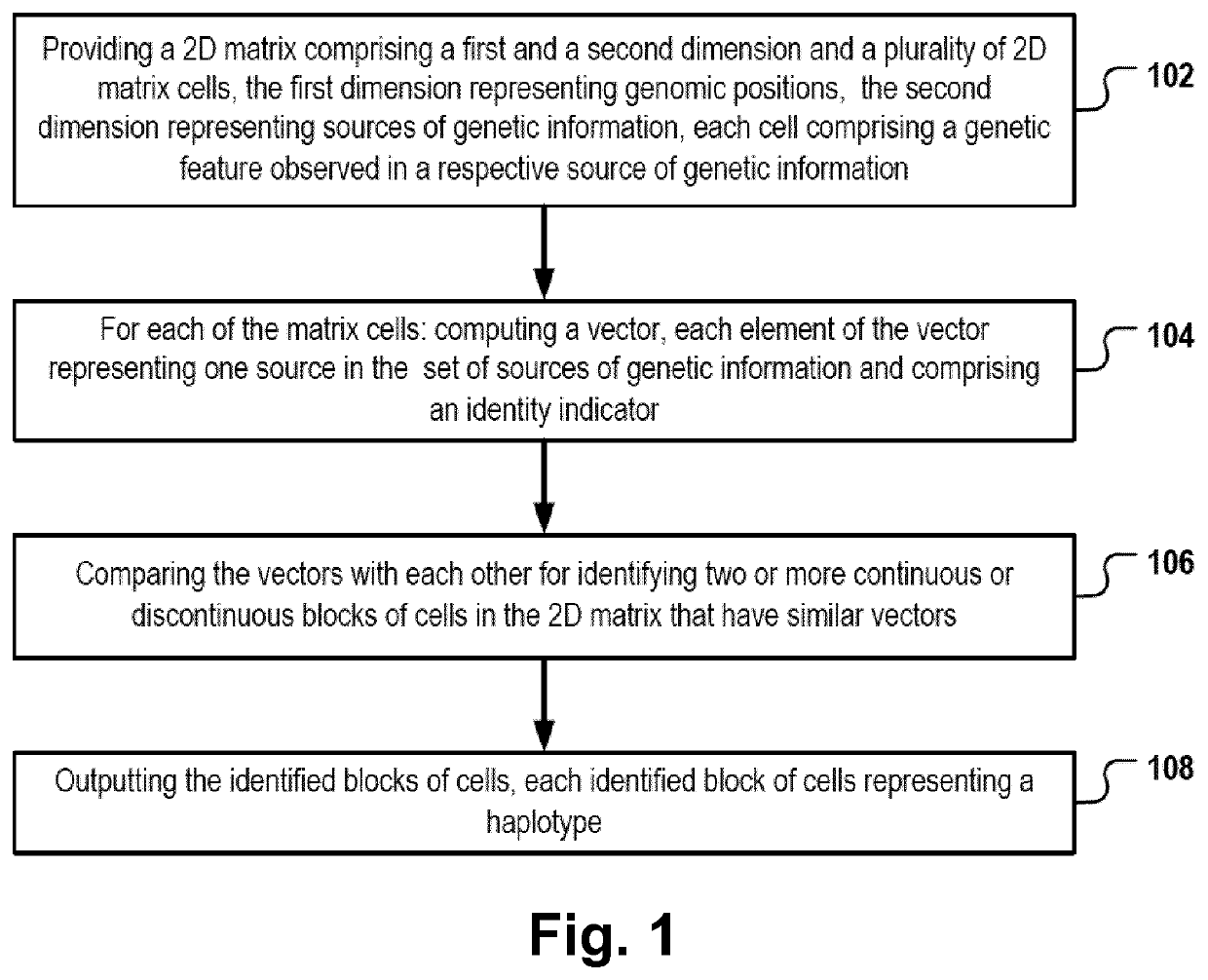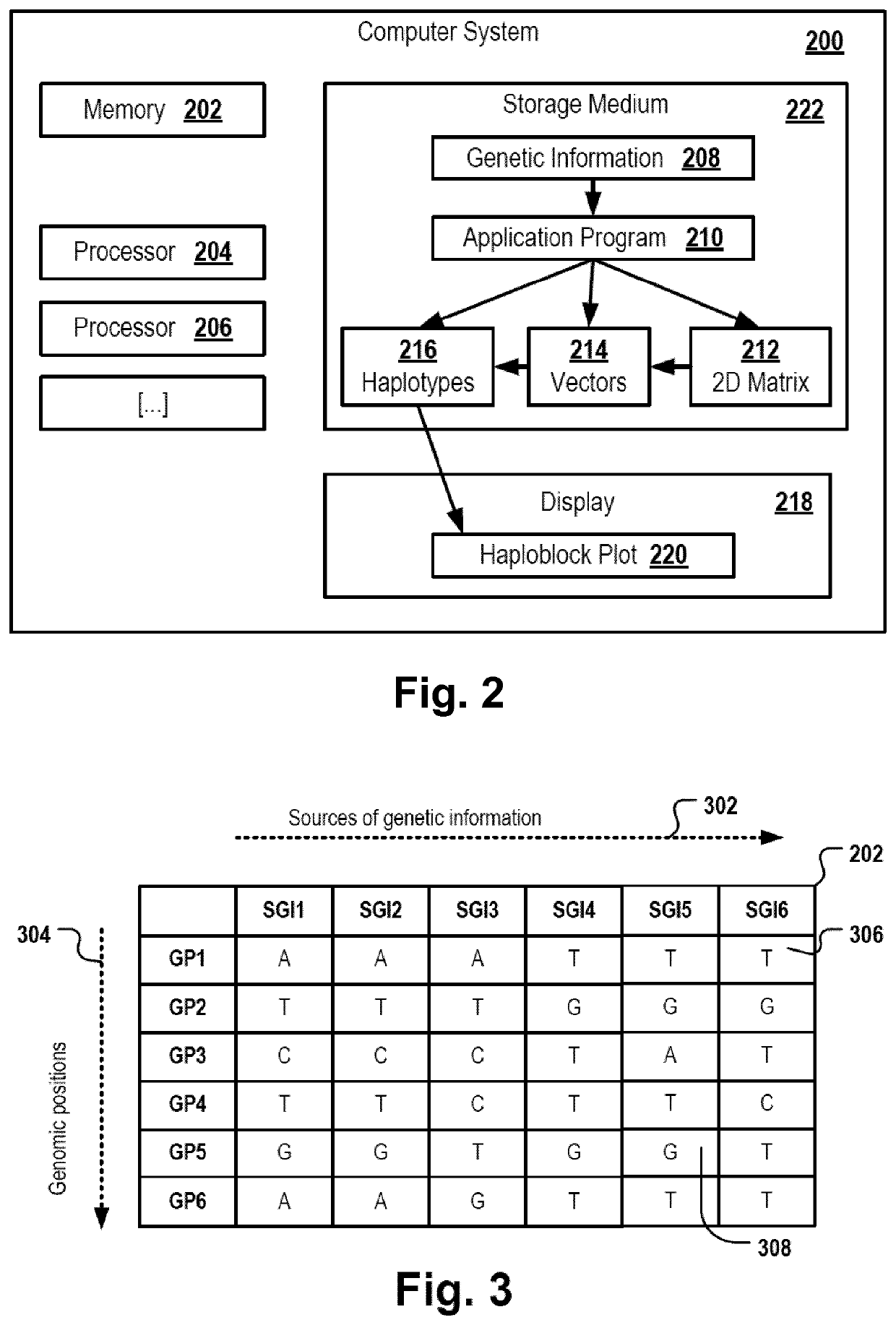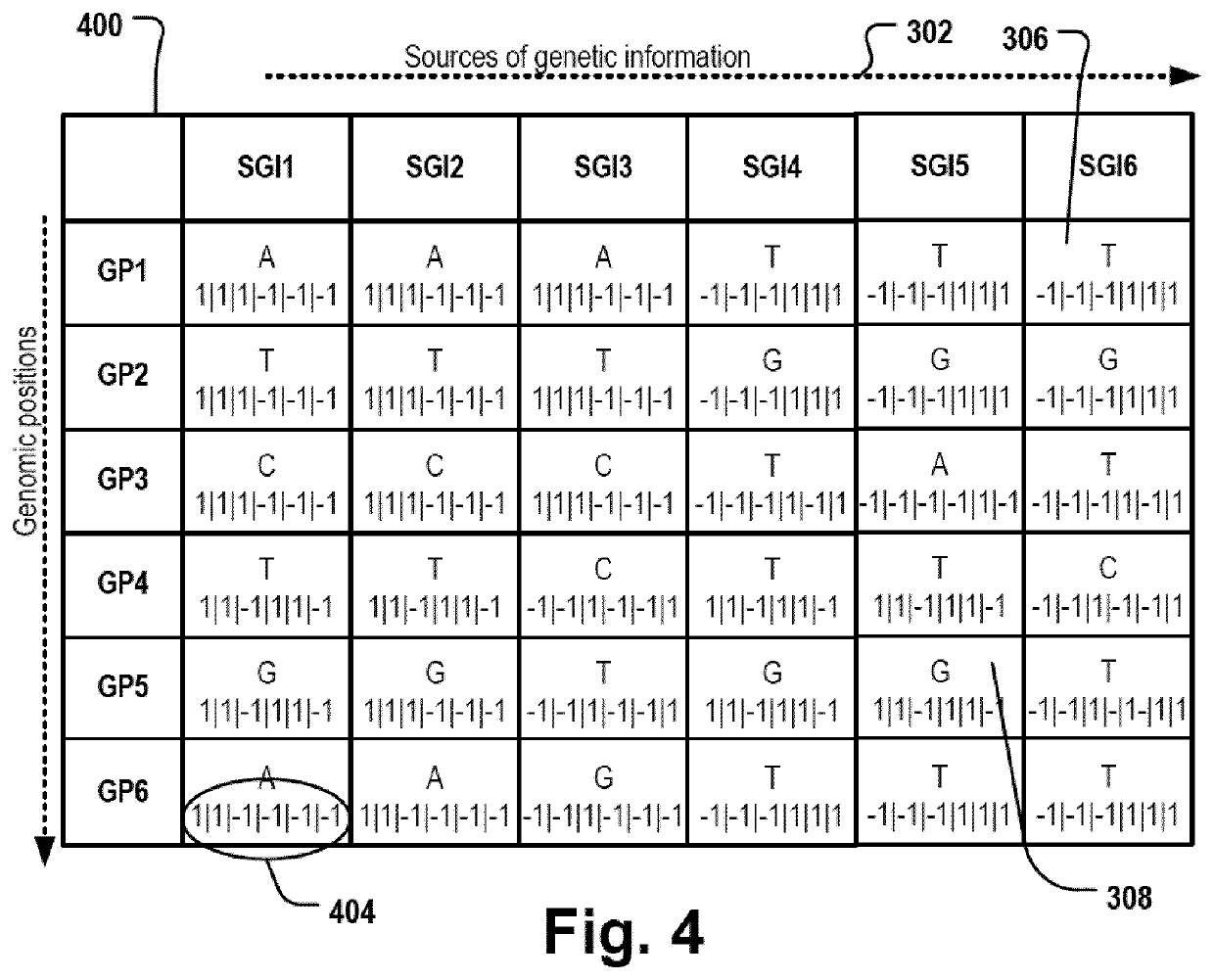Vector-based haplotype identification
a vector-based, haplotype technology, applied in the field of bioinformatics, can solve the problems of affecting the accuracy of gwas, and only able to handle small numbers of genomic features, so as to avoid or at least reduce the effect of linkage drag effects, improve the precision of gwas, and reduce the difficulty of gwas re-inspection
- Summary
- Abstract
- Description
- Claims
- Application Information
AI Technical Summary
Benefits of technology
Problems solved by technology
Method used
Image
Examples
Embodiment Construction
[0176]FIG. 1 is a flowchart of a computer-implemented haplotype identification method. In the following, the method depicted in FIG. 1 will be described by referring also to components of the system depicted in FIG. 2. The method can be executed, for example, by one or more processors 204, 206 of a computer system 200 executing a haplotype-identification application program 210.
[0177]First in step 102, a 2D matrix 202 is provided. For example, the computer system 200 can read, create or otherwise instantiate a data structure, e.g. a vector or an array, that can be used as a container for a two-dimensional matrix of data values. The 2D matrix comprises a first dimension 304 representing a sequence of genomic positions and a second dimension 302 representing an ordered list of sources of genetic information. For example, the sources of genetic information can be a population of organisms. Alternatively, the sources of genetic information can be a set of tissues of one or more organism...
PUM
 Login to View More
Login to View More Abstract
Description
Claims
Application Information
 Login to View More
Login to View More - R&D
- Intellectual Property
- Life Sciences
- Materials
- Tech Scout
- Unparalleled Data Quality
- Higher Quality Content
- 60% Fewer Hallucinations
Browse by: Latest US Patents, China's latest patents, Technical Efficacy Thesaurus, Application Domain, Technology Topic, Popular Technical Reports.
© 2025 PatSnap. All rights reserved.Legal|Privacy policy|Modern Slavery Act Transparency Statement|Sitemap|About US| Contact US: help@patsnap.com



